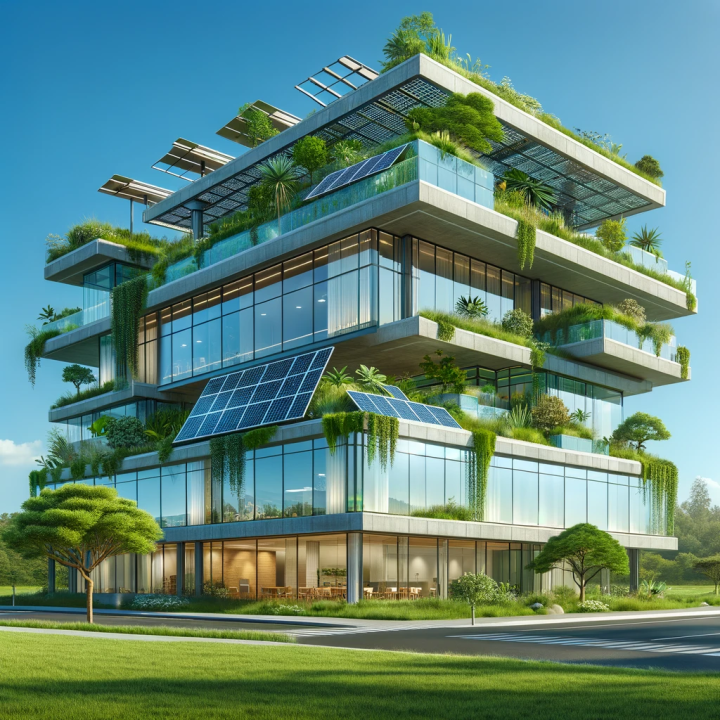As an expert SEO blog post writer specializing in AI and SEO content, I bring in-depth knowledge and insights into commercial architecture. In this comprehensive guide, we’ll explore everything you need to know about commercial architecture, from its fundamentals to advanced techniques, optimization strategies, and more. Let’s delve into the world of commercial architecture and uncover its significance in the built environment.
Key Takeaways
| Key Takeaways |
|---|
| 1. Commercial architecture blends functionality with aesthetics. |
| 2. Sustainable practices are crucial for modern commercial buildings. |
| 3. Trends include mixed-use developments and adaptive reuse. |
| 4. Innovative materials like mass timber are shaping the industry. |
| 5. Design considerations encompass site context and human scale. |
Table of Contents
- Introduction to Commercial Architecture
- Key Elements of Commercial Architecture
- Benefits of Commercial Architecture
- Trends in Commercial Architecture
- Sustainable Practices in Commercial Architecture
- Innovative Materials and Technologies
- Design Considerations for Commercial Spaces
- Case Studies: Iconic Commercial Buildings
- Future of Commercial Architecture
- Conclusion
Introduction to Commercial Architecture
Commercial architecture refers to the design and construction of buildings and structures for commercial purposes, such as offices, retail spaces, hotels, restaurants, and more. It encompasses a wide range of architectural styles, techniques, and considerations tailored to meet the functional and aesthetic needs of businesses and organizations.
Key Elements of Commercial Architecture
Some key elements of commercial architecture include:
- Functionality: Designing spaces that support the specific needs and activities of commercial users.
- Aesthetics: Creating visually appealing environments that enhance the brand image and customer experience.
- Sustainability: Integrating sustainable design principles to minimize environmental impact and reduce operating costs.
- Flexibility: Designing adaptable spaces that can accommodate changing business requirements and trends.
- Accessibility: Ensuring that commercial spaces are accessible to all users, including individuals with disabilities.
Benefits of Commercial Architecture
Commercial architecture offers numerous benefits to businesses and communities, including:
- Brand Identity: Well-designed commercial spaces can reinforce brand identity and create memorable experiences for customers.
- Productivity: Thoughtfully designed work environments can enhance employee productivity, satisfaction, and well-being.
- Community Engagement: Vibrant commercial developments can contribute to the social and economic vitality of communities.
- Sustainability: Sustainable commercial buildings can reduce energy consumption, lower operating costs, and mitigate environmental impact.
- Investment Value: High-quality commercial architecture can attract tenants, investors, and customers, increasing the value of properties over time.
Trends in Commercial Architecture
Some current trends in commercial architecture include:
- Mixed-Use Developments: Integrating multiple functions, such as residential, retail, and office spaces, within a single development.
- Adaptive Reuse: Repurposing existing buildings for new commercial uses, preserving historical character and reducing waste.
- Biophilic Design: Incorporating natural elements, such as plants and natural light, into commercial spaces to improve well-being and connectivity with nature.
- Smart Buildings: Using technology to optimize building operations, improve energy efficiency, and enhance occupant comfort and safety.
- Modular Construction: Prefabricating building components off-site and assembling them on-site to streamline construction processes and minimize waste.
Sustainable Practices in Commercial Architecture
Sustainable practices play a crucial role in commercial architecture, helping to minimize environmental impact and enhance long-term resilience. Some sustainable strategies include:
- Energy Efficiency: Incorporating passive design strategies, high-performance building envelopes, and energy-efficient systems to reduce energy consumption.
- Renewable Energy: Integrating renewable energy sources, such as solar panels and wind turbines, to generate on-site electricity and reduce reliance on fossil fuels.
- Water Conservation: Implementing water-efficient fixtures, rainwater harvesting systems, and drought-tolerant landscaping to minimize water usage and runoff.
- Material Selection: Choosing environmentally friendly materials with low embodied carbon, recycled content, and renewable resources.
- Green Infrastructure: Designing with green roofs, permeable pavements, and urban forests to manage stormwater, improve air quality, and enhance biodiversity.
Innovative Materials and Technologies
Advancements in materials and technologies are transforming the field of commercial architecture, offering new possibilities for design, construction, and sustainability. Some innovative solutions include:
- Mass Timber Construction: Using engineered wood products, such as cross-laminated timber (CLT) and glulam beams, for tall buildings and sustainable structures.
- 3D Printing: Employing additive manufacturing techniques to create complex building components, prototypes, and custom architectural elements.
- Smart Glass: Integrating dynamic glazing systems that can adjust tint, opacity, and thermal performance in response to environmental conditions and user preferences.
- Responsive Facades: Installing kinetic facades and adaptive shading systems that can modulate daylight, solar heat gain, and views to optimize indoor comfort and energy efficiency.
- Virtual Reality (VR) and Augmented Reality (AR): Using immersive technologies to visualize designs, simulate user experiences, and streamline the design review process.
Design Considerations for Commercial Spaces
Designing successful commercial spaces requires careful consideration of various factors, including:
- Site Context: Responding to the site’s unique characteristics, such as topography, climate, views, and urban context.
- Program Requirements: Understanding the functional needs, spatial requirements, and user preferences of the commercial program.
- Building Codes and Regulations: Complying with local zoning ordinances, building codes, accessibility standards, and environmental regulations.
- Human Scale and Proportion: Creating spaces that feel comfortable, inviting, and proportionate to human scale, with appropriate ceiling heights, room dimensions, and circulation paths.
- Materiality and Detailing: Selecting durable, low-maintenance materials and finishes that enhance aesthetics, durability, and user experience.
Case Studies: Iconic Commercial Buildings
Examining case studies of iconic commercial buildings can provide valuable insights into successful design strategies, innovative solutions, and architectural excellence










